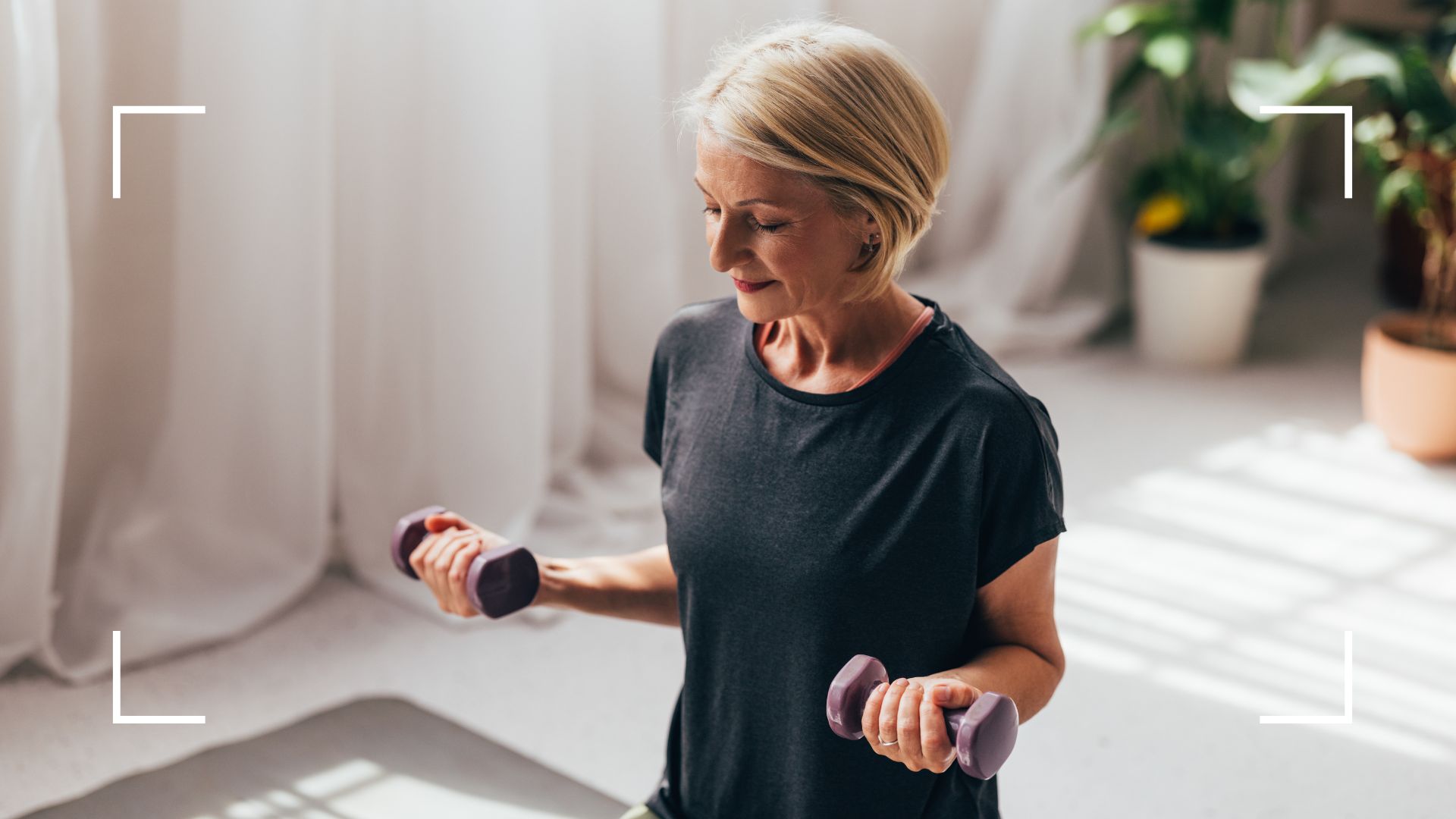
Strength training at home for beginners is a great workout routine for those looking to maintain muscle, improve flexibility, and support other exercise activities. It can be quick, convenient, cost-effective, and you don't even need any weights to get started.
While having a pair of the best dumbells or some resistance bands is very useful, you can just use your body weight to begin with. "Bodyweight exercises such as squats, planks, and lunges, engage multiple muscle groups simultaneously, promoting overall strength, proprioception, and coordination," says personal trainer and coach Rhoda Cameron. "These exercises can also put less strain on the joints when compared to free weight training, thereby reducing the risk of injury. They can also help with balance and mobility."
Strength training has a lot to offer women and getting into a good routine at home can be the best to get the workout in for many people. Here, personal trainers and sports scientists speak to woman&home about the exercises they recommend for beginners, how to do them, and tips for making progress.
Strength training at home for beginners
1. Squats
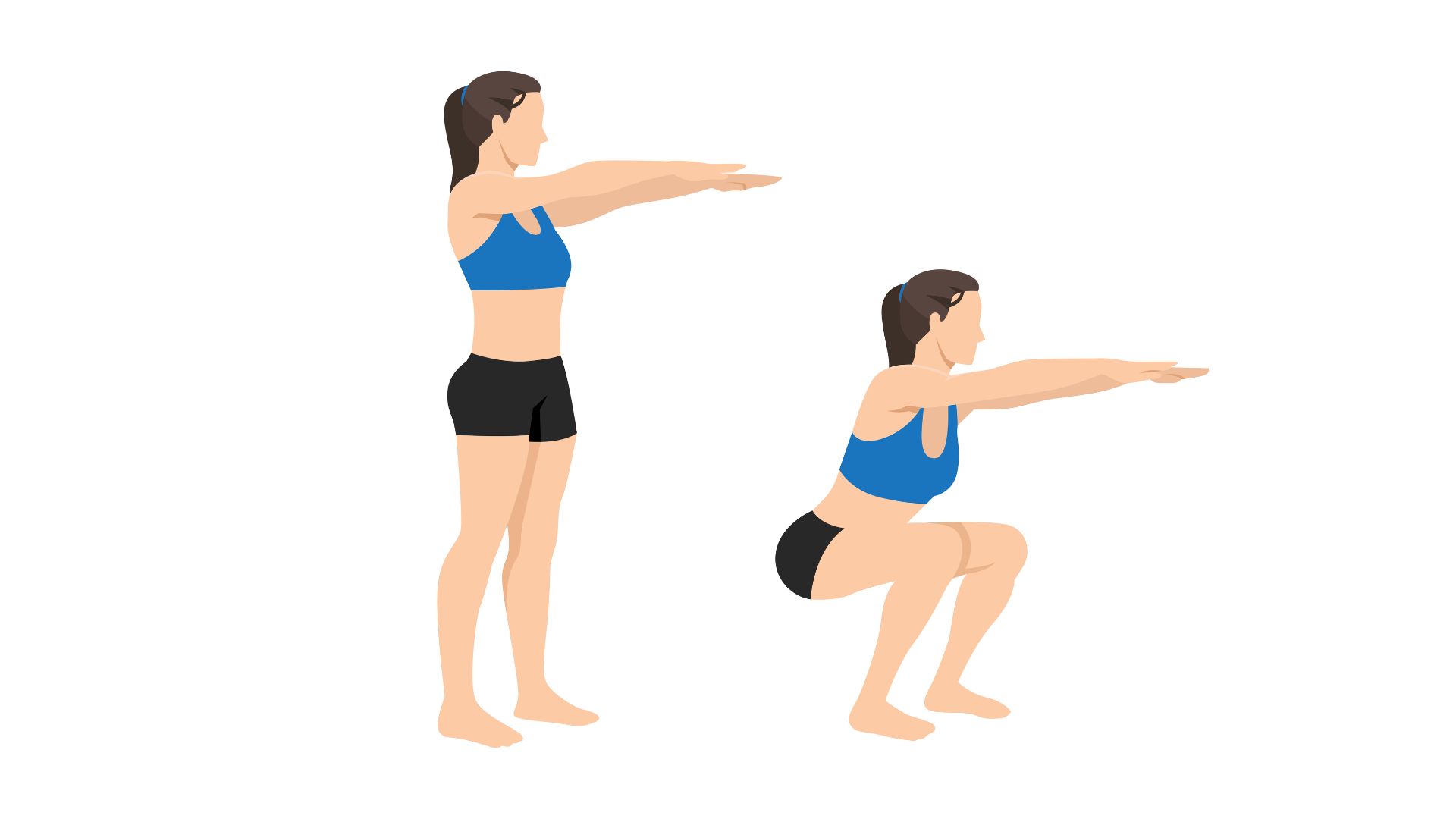
"These are a great way to achieve strong and toned legs as they work your quads, hamstrings, and glutes," says Cameron.
It's best to start with a bodyweight squat, clasping your hands together in front of you or holding them out to the side to help maintain your balance through the movement. Once you've mastered these, Cameron says, "you can start experimenting with different variations, and perhaps hold some hand weights for extra resistance too."
How to do a squat:
- Begin by standing with your feet hip-width apart, toes either facing straight ahead or slightly turned out. Place your hands on your hips.
- Keeping your back straight and head up, bend gently at the knees and slowly lower yourself into a sitting position (as if about to sit on a chair), shifting your weight onto your heels and making sure your knees don't go past your toes.
- If possible, hold this position for 1 - 2 seconds before you ease back up to the start position.
- Start with 10 reps and work up to 20 or more.
Squats - along with lunges, split squats, hip thrusts, and all types of deadlifts - are an example of a compound movement. "These are exercises that target different muscle groups at the same time," explains Steve Chambers, a certified personal trainer and gym manager at Ultimate Performance.
"Rather than isolation moves, a bicep curl for example, which hit only a small and specific group of muscles, compound exercises recruit lots of different muscle groups, which means you’re getting a lot more bang for your buck per move," he says. This makes them a perfect addition to various routines, including strength training for weight loss and the more advanced, structured 5 x 5 workout.
2. Modified or box push ups
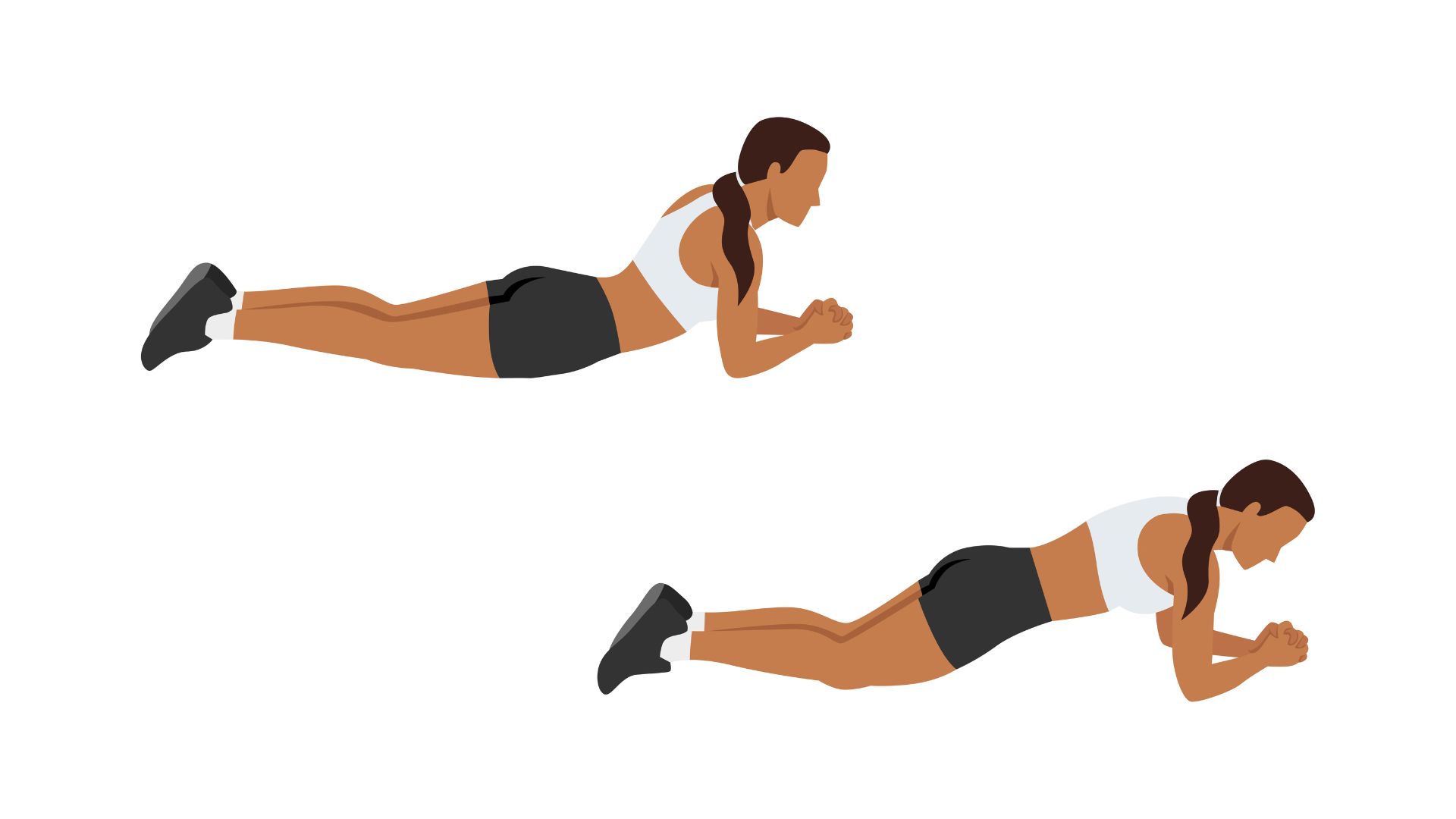
Push-ups are one of the best features of at-home workouts as they build strength in your triceps and pectoral muscles, and they are great for a stronger and more stable core, says Cameron. But, despite their appearance, push-ups are deceptively difficult, so start with modified push-ups if you want to.
This involves having your knees on the floor and your hands in a slightly different position than a traditional push-up would suggest. "To make the exercise easier or harder, play about with arm positioning: the farther apart the hands, the easier the move," she says.
How to do a modified push-up:
- Position yourself on all fours, hands directly under the shoulders and knees directly under the hips. Your gaze should be focused on the floor while your hands are placed slightly wider than shoulder-width apart.
- Keep your abdominal muscles contracted throughout the exercise for proper form and make sure your back is neither arched, nor rounded.
- To perform the push-up, slowly bend your elbows out to the side as you lower your chest until your chin grazes the floor, then slowly push back up to return to the start position, ensuring your back is straight throughout.
Once you've got the hang of the movement, aim for three sets of 10 reps, with a perceived difficulty level of seven out of 10, Cameron says.
3. Lateral raises
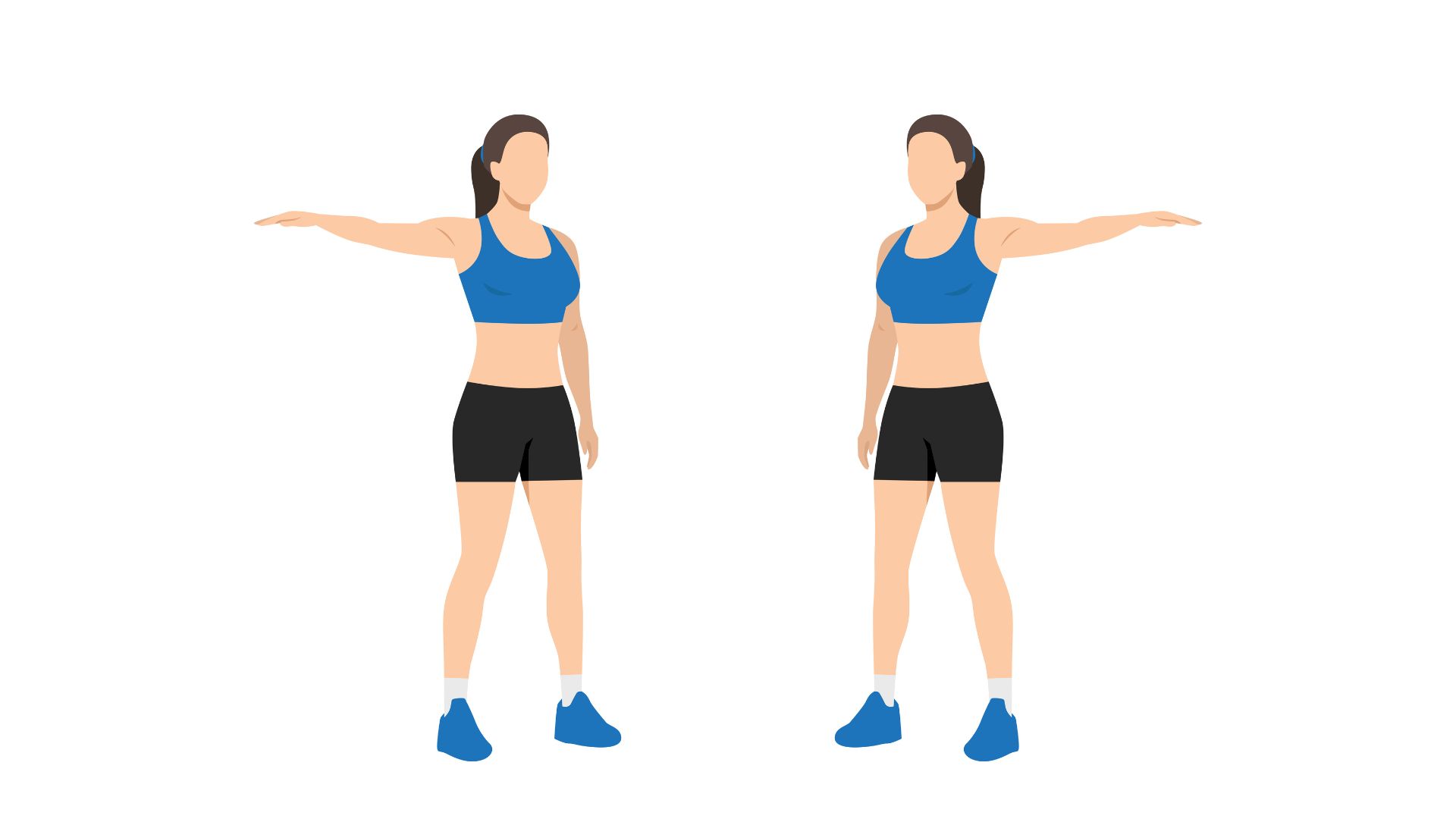
It's just as important to work your upper body as it is to work your lower when doing strength training at home for beginners, Cameron reminds us. "Lateral raises can help you build muscle [around the shoulders, biceps, and triceps], and also increase mobility and the range of motion in your shoulders," she says.
This is another effective bodyweight exercise but, if you want to make it slightly harder for yourself, you can hold a light pair of adjustable dumbbells in each hand for this move. "Choose light weights that you can perform 10 reps with," she suggests. "Be sure to activate your core muscles too as this will help support your back and help prevent it from arching during the exercise."
How to do a lateral raise:
- Stand with feet hip-width apart, knees soft, arms hanging down by your sides, elbows slightly bent and palms facing your hips.
- Leading with slightly bent elbows, raise your arms out to the side, pausing as you reach shoulder height.
- Slowly lower back down to the start position.
- Make sure the motion is slow and controlled, ie a lift and a lower, rather than a swing.
- Raise both arms together or one at a time, whichever you feel more stable with.
4. Split squat
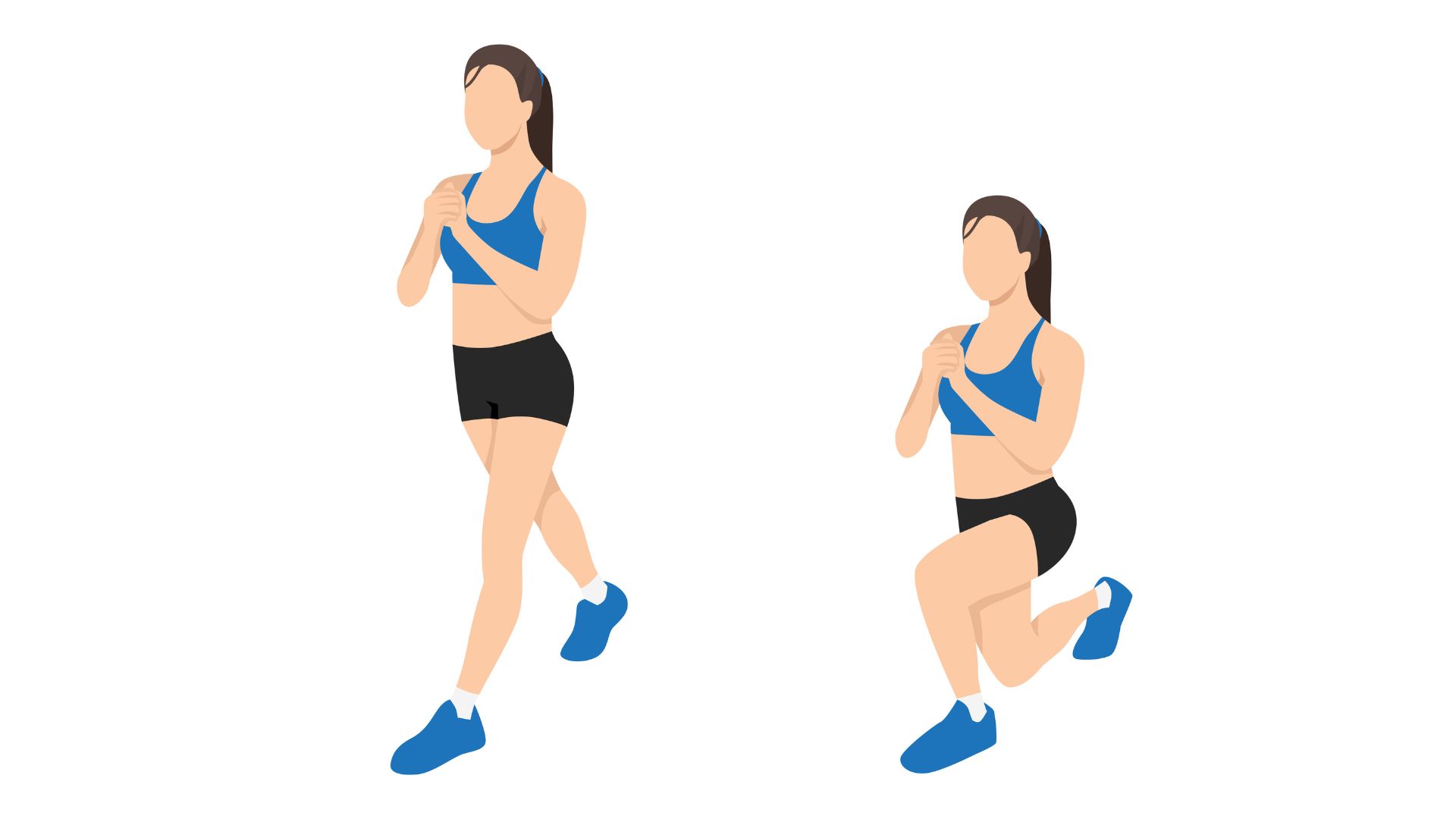
A split squat is another compound movement, recommended by Steve Chambers. As it involves separating the legs - putting one in front of the other - it's a great movement for working your glutes, hamstrings, quads, and core muscles, along with your coordination and balance.
"Pick a stride length that allows you to keep your front foot equally placed on the floor throughout, without the heel lifting," he says. "The back foot should not be so far back that you cannot fully flex the back leg or the hips are pulled forward."
How to do a split squat:
- Stand in an open space with your feet shoulder-width apart.
- Place your hands on your hips and tuck your elbows in (bodyweight) or let them hang by your sides with the palms facing inwards (dumbbells)
- Step backwards and place your toes on the floor, with shoelaces facing down and your heel raised.
- Drop your back knee down towards the floor and drive your front knee forward to close the gap between the back of your thigh and calf.
- In the bottom position, your front foot should be flat and your back knee bent at 90 degrees and one to two inches above the floor.
- Pause for a moment at the bottom, keeping the upper body braced and tension in your legs.
- Push through the front leg to reverse the motion (imagine closing a pair of scissors) to return to the start position.
Any movement in strength training at home for beginners is adjustable. If your flexibility is limited, Chambers recommends elevating your front heel with a wedge to allow you to fully move through the movement. "Full range of motion movements enable everything to move, because the greater the range of motion, the more control you have at the end range of the movements and the less likely you are to hurt yourself," he says.
As well as being one of the best bodyweight workouts, split squats are a great addition to any strength training for runners routine since, much like running, split squats put pressure on one leg at a time and so allow you to develop strength equally in both.
5. Plank
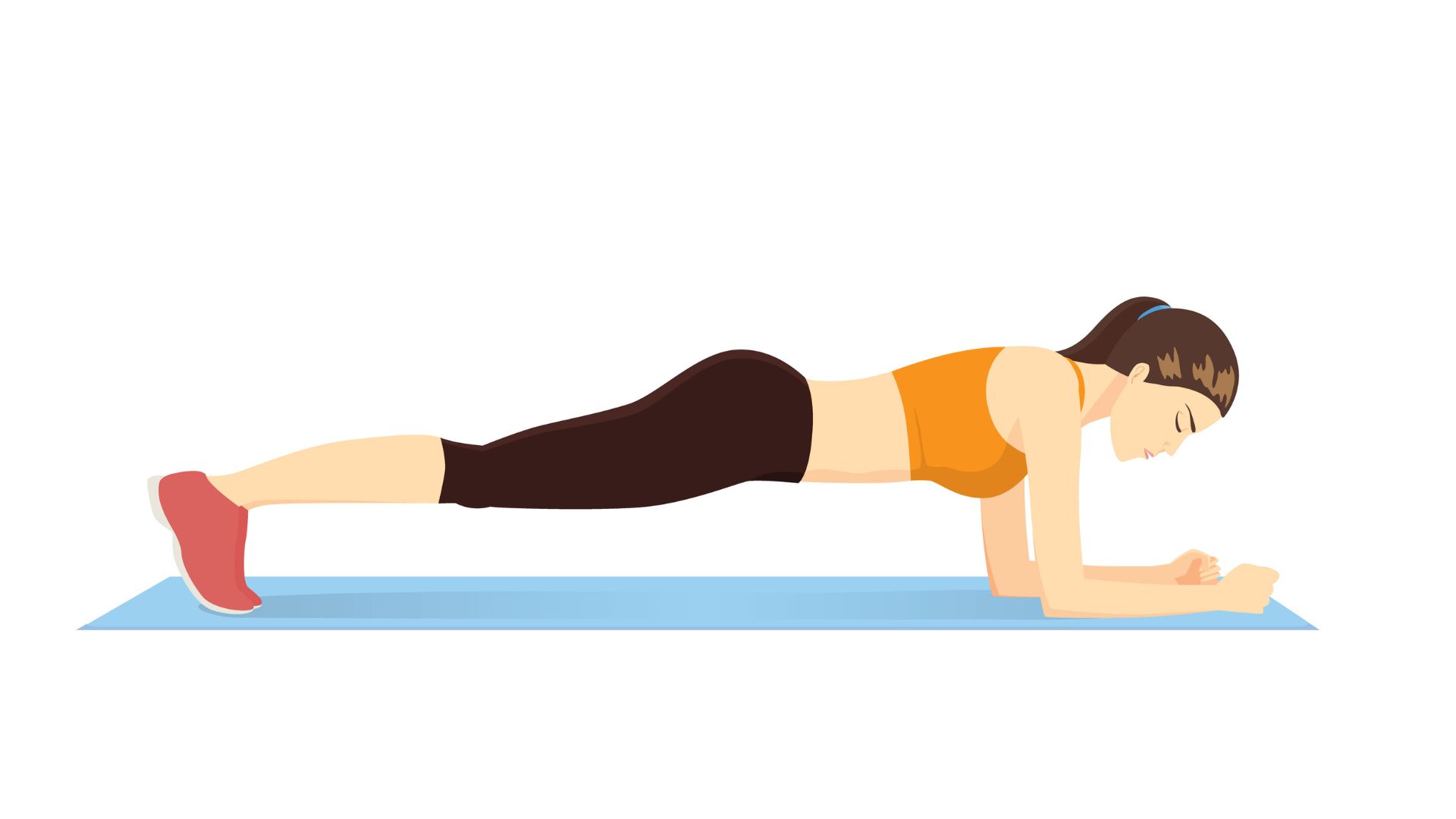
The plank is one of the best core exercises to do at home, the trainers agree. "It's excellent for core strength, which helps to support the body and posture in all aspects of exercise, and shoulder stability. It can also help reduce back pain," says Jenny Pacey, sports scientist, certified personal trainer, and bio-synegy.uk ambassador.
How to do a plank:
- Start in a forearm plank position, elbows directly below shoulders.
- Keep your body in a straight line from head to heels, engaging the core. This is most effectively achieved by drawing the rib cage down towards the belly button, drawing the pelvic floor up towards the belly button and subtly pulling the belly button towards the spine.
- Look slightly ahead, push back through the heels, and down through the elbows and forearms, slightly tucking the tail bone under.
For this one, the length of the exercise is measured in time rather than reps. "Hold the position for as long as you can, maintaining good form," says Pacey. You may only be able to do 15 second to begin with but over time, aim to increase this to a minute or more.
Can you do strength training without weights?
Strength training at home for beginners is the perfect workout for those with little to no equipment. All you need is your body weight for an effective workout, says PT Haylene Ryan Causer. Bodyweight exercises, including those above and other programs like Pilates for strength training, "improve daily functional strength, enhance flexibility, and promote better body awareness."
They are also less likely to lead to injury compared to weighted exercises, she adds. "They allow individuals to build a foundation and improve form before adding external weights."
That being said, if you're looking to continue strength training at home in the long term, it's worth investing in a few key pieces of equipment. As personal trainer Pacey says, "Resistance bands are great for adding resistance to bodyweight exercises and increasing intensity, yoga mats provide comfort and stability for floor exercises, and dumbbells or kettlebells add resistance for more challenging strength workouts."
Regardless of what movement you do, from squats to planks, this mat ticks all the boxes for support and comfort. It performs when it comes to grip too and is slightly wider than standard mats on the market as well, so you feel like you have plenty of room to move. Alternatively, for more support, you might find one of the best thick yoga mats to be a better choice.
For a completely packable home gym, this set is perfect. It comes with a handy bag for storage and includes a door anchor for upper body work. The five resistance bands are different colours to indicate different weights and range from x-light (2-4lbs) to x-heavy (25-30lbs), giving you a great selection of equipment for different workouts at a super affordable price.
With three weight variations and a latex-free construction, this set is perfect for testing the waters with weight training. If you're just starting out, you can use these dumbells for lower body workouts as well as upper body and it comes with a sturdy, discreet stand for easy storage between workouts.
How many times a week should beginners strength train?
Those new to strength training should aim for two to three sessions a week, Cameron suggests. "Make sure to start slowly and build up the intensity gradually," she says. "You want to aim for a perceived exertion level of around seven, so increase or decrease the weights (or modify the moves) accordingly."
Naturally, how often you should do strength training depends on your lifestyle, goals, and previous exercise experience. Speak to your doctor before taking on a new training routine.
Tips for doing strength training at home
- Don't do too much too soon: "There is always a temptation to go too hard, particularly when you’re super motivated to get in shape, but if you’ve never lifted weights before, it’s going to be a bit of a shock to the system," says Chambers. "Ease yourself in with light weights and focus more on getting your form right."
- Make sure to stretch: "Incorporate stretching and flexibility in daily routine to maintain joint health and range of motion," says Haylene Ryan Causer. Need help? The best stretching apps have routines for everyone, whether you're completely new to stretching out or a yoga-lover-turned-strength-training enthusiast.
- Complement your training with the right nutrition: "Consume an adequate amount of protein to support muscle repair and growth, and include a variety of nutrient-dense foods [in your diet], emphasising fruits, vegetables, lean proteins, and whole grains," suggests Pacey. This can be done by changing your diet and supplementing what you eat with one of the best protein powders, for example.
- Always listen to your body: There's a common misconception that strength training at home for beginners is easier than cardio exercise but that's often not true. "You know your body better than anyone else and if a particular exercise doesn't feel right for you, omit it or ask for an alternative," says Cameron. It's also important to take rest days regularly.
-
Change up your routine: "Try to vary your routines to ensure you get a good all-over workout, but also to keep things interesting," suggests PT Rhoda Cameron. In general, the experts suggest you change your routine every six weeks to give your body a chance to adapt to the activity before changing your routine. One of the best workout apps can be a helpful way to discover other workouts for strength training at home for beginners.
The key to strength training at home for beginners is to ensure you're making it harder for yourself over time though. This is otherwise known as progressive overload, says Chambers. "All it means is that you progressively make each workout more difficult. By doing that, the body has no choice but to continually adapt to the ever-increasing stimulus – whether that’s lifting heavier weights or slowing down the movement to increase the time you spend under tension. As a result, you get fitter and stronger."







